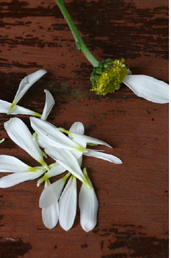
Take the same creativity that fuels the work of artists and professors in U of G’s School of Fine Art and Music, direct it at a curriculum problem, and what do you get? A creative solution, naturally. In this case, it’s an online studio art course that’s already become a big hit with students.
The problem was limited studio space on campus.
“We simply don’t have the facilities to accommodate students who want to take studio art courses as electives,” says Prof. Susan Dobson.
With the support of Prof. Martin Pearce and the studio art faculty, she developed the framework for a creative solution — SART 1150-DE Contemporary Artistic Practice — that eliminates the need for on-campus space because it’s all online. The first course was offered in the 2010 winter semester; a new session begins May 13.
Going online sounds like an obvious solution, until you think about this being a hands-on studio course where students not only study the work of contemporary artists but are also required to complete three major art projects. Dobson soon discovered there were no other online courses with visual art assignments they could use as models.
“We had to invent it all ourselves,” she says.
The invention process also required teamwork and collaboration with course instructor Kerri Reid, a 2006 master of fine art graduate, and staff from the Office of Open Learning (OOL) to develop the content and instructional strategies and provide the necessary technical support. Natalie Giesbrecht, a distance learning program development specialist in OOL, was a natural choice to work on this project because she’s also a Guelph fine art graduate; she completed an undergraduate degree in 2002.
“One of the first challenges we faced when we began designing this course was clearing copyright for a large volume of images,” says Giesbrecht. “You can’t effectively learn about contemporary art without looking and interacting with it. This meant contacting all the copyright holders, getting permission and seeking out replacement images in situations where we weren’t able to get consent.”
There are well over 100 images embedded in the course. Reid developed most of the course content and augmented course material with “virtual slide carousels” that include additional images related to the topics under discussion. This provides more layers of enrichment for students.
“The learning activities incorporated into the course encouraged learners to look more closely at a wide variety of works and to think critically about these through discussion with their peers,” says Giesbrecht.
Dobson adds: “One essential aspect of our role will be to keep the course updated; by its nature, contemporary art keeps changing.”
In trying to anticipate other challenges, Dobson found she had underestimated the comfort and skill most of today’s students have with technology.
“There were very few glitches,” she says. “We expected that students might have some problems with uploading images, and we wondered how the process of critiquing each other’s work would go. But we totally underestimated the students. They are so good at social networking and sharing images that it all went smoothly.”
Reid agrees: “The students submit art to me as a jpeg and post the same image on a Flickr photo group we set up for the class. The students may not have met, but they all saw their peers’ projects, commented on each other’s work and were very supportive. It was really excellent watching the community grow and actually work.”
“The Flickr photo group became a virtual gallery of the students’ artwork,” says Giesbrecht. “In the private and secure space, learners could feel safe sharing their work and benefit from seeing how different people approached the same project.”
Online discussion groups were another essential part of the course, and Giesbrecht says she felt Reid handled this particularly well. “She was the ‘guide-on-the- side’ who would steer discussions and pose questions. It really became a learner-centred environment where the students participated. From my perspective, she has done an awesome job.”
Launched initially in the 2010 winter semester, the online course will run again through the summer and is open to all students; there are no prerequisites. “You can be anywhere in the world and take this course,” says Dobson. “All you need is an interest in contemporary art, a basic digital camera and Internet access.”